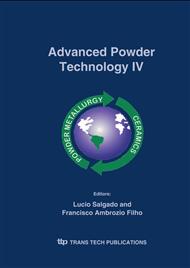p.569
p.575
p.581
p.587
p.594
p.600
p.606
p.612
p.618
Biofunctionalization of Glass Powder by Cold-Plasma Technique
Abstract:
The present work deals with cold plasma organosilicon treatment of glass powder surfaces. The treated material underwent subsequent chemical derivations by storing samples inside an evacuated chamber, allowing chemical penetration at controlled pressures. The radicals’ inductions were characterized by XPS within each stage of modification. The enzyme peroxidase was immobilized using functionalized materials to check the resultant biocompatibility. A sequence of surface tailoring is proposed suggesting the anchoring of enzyme via C = O groups implanted on the glass surface. The experimental results demonstrate that the proposed process is suitable for the functionalization of materials with irregular shapes.
Info:
Periodical:
Pages:
594-599
Citation:
Online since:
November 2005
Authors:
Price:
Сopyright:
© 2005 Trans Tech Publications Ltd. All Rights Reserved
Share:
Citation:


